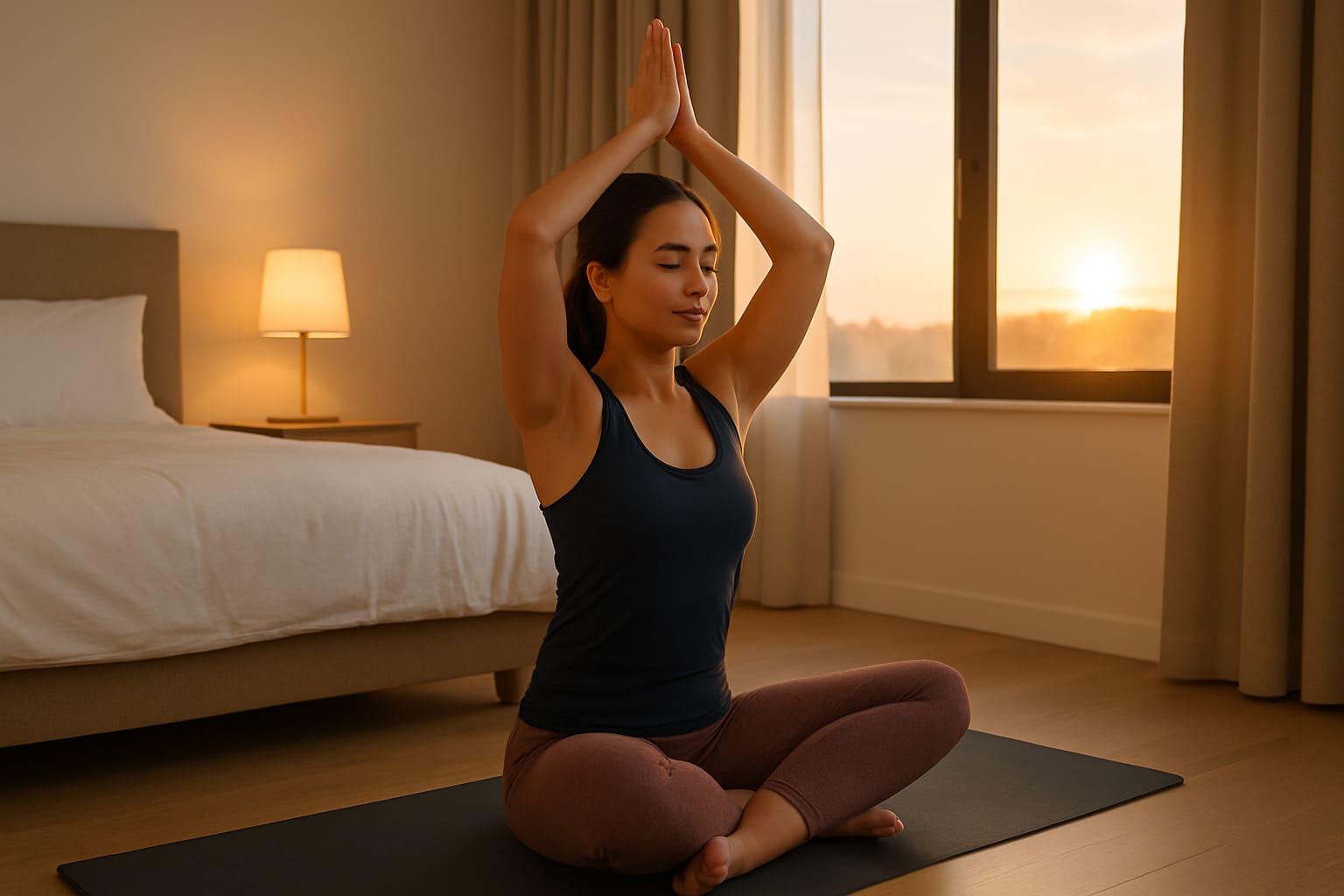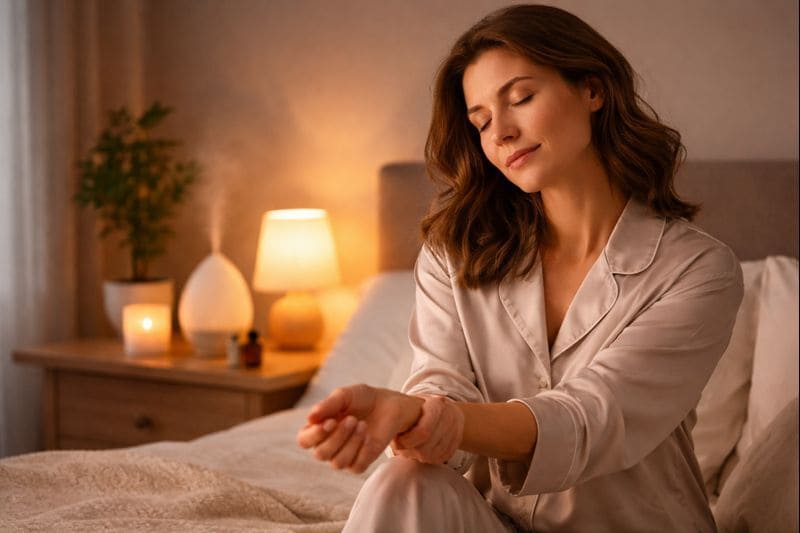Cardiac arrhythmia is an irregular or erratic heartbeat. An arrhythmia occurs when the electrical impulses that regulate the heartbeat are not functioning correctly. The heart rhythm may be too fast (ventricular tachycardia / supraventricular tachycardia), too slow (bradycardia), or erratic and irregular (atrial fibrillation). The most common arrhythmia is atrial fibrillation (AF), an irregular and rapid heartbeat.
It’s perfectly normal for your heart rate to quicken during exercise and to slow down during rest or sleep. During physical activity, the body requires more oxygen and the heart has to pump faster to meet the demand. The heart’s normal rhythm varies between people, and having a faster resting heartbeat is usually no cause for concern. But if you frequently experience an irregular heart rhythm, a racing heart, or an abnormally slow heart rate, your heart may be struggling to supply enough blood to your body. Knowing how to use the acupressure points for heart arrhythmia will help you to take care of your heart and recognize the symptoms of any more serious problems early on.
What Are The Symptoms Of Arrhythmia?

Symptoms of heart arrhythmia include shortness of breath, chest pain or tightness, heart palpitations, and feelings of exhaustion or fatigue. These are signs that your heart is not pumping blood fast enough to provide the oxygen the body needs. This can lead to dizziness, blurred vision, or even cause you to faint.
An erratic and irregular heart rate may also cause feelings of anxiety. Heart arrhythmias can also be asymptomatic, passing unnoticed until showing up in a routine physical exam.
What Causes Heart Arrhythmia?
Common triggers for heart arrhythmia include the use of certain substances, such as nicotine and alcohol, cocaine and amphetamines, caffeine, diet pills, and medications used to treat coughs or colds, allergies, or high blood pressure. Antibiotics can also trigger arrhythmias in some people.
Some heart arrhythmias are caused by imbalances of electrolytes in the blood, such as sodium, calcium, potassium, or magnesium. Viral illnesses can trigger arrhythmias, and emotional or physical stress can also cause an irregular heart rate.
Can Acupuncture Help Heart Arrhythmia?
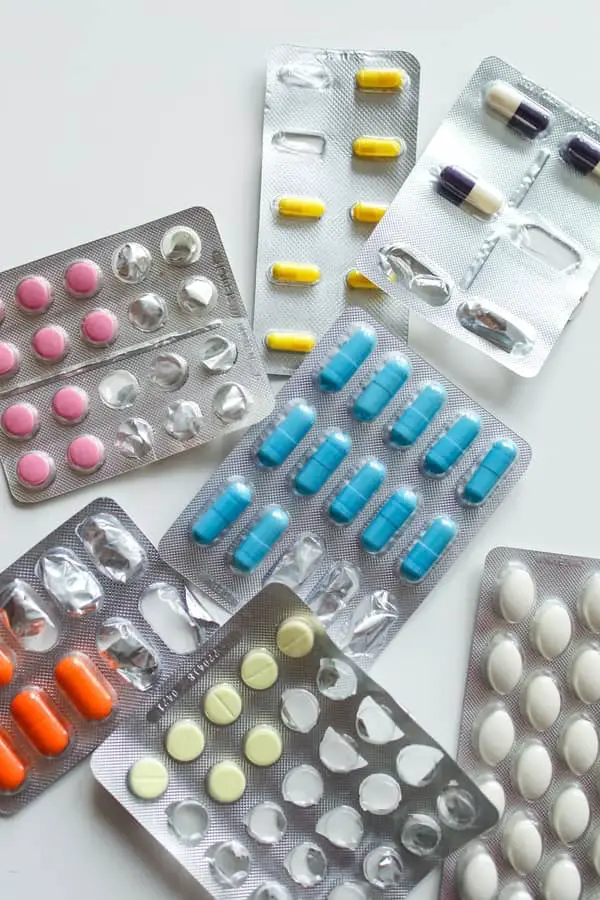
If you experience heart arrhythmia, ensure you engage in regular exercise and eat a healthy, balanced diet. If you are in good health, your arrhythmia is more likely to be due to stress or anxiety. Using acupressure to manage difficult emotions will help to lower your blood pressure and reduce your risk of cardiovascular problems.
Traditional Chinese medicine techniques such as acupuncture treatments and acupressure have been shown in a systematic review to relieve angina symptoms and reduce the frequency and intensity of pain in patients with angina pectoris.
Daily stimulation of the acupressure points for heart arrhythmia is a natural treatment to calm the heart and relieve the symptoms of arrhythmia. University of Minnesota researchers found stimulation of the appropriate acupoints effective in the treatment of cardiac arrhythmias, with acupuncture reverting certain heart arrhythmias to normal.
Using the acupressure points for heart arrhythmia and heart palpitations can be an effective form of treatment to ensure regular heart function. If you suffer from frequent or severe arrhythmias, however; or if your abnormal heart rate is related to injury or trauma, previous heart conditions or heart surgery, or serious medical conditions, you should seek medical help.
What Are The Acupressure Points For Heart Arrhythmia?
There are many important acupressure points for heart health, including SP-1 (Yin Bai, “Hidden White”), PC-6 (Nei Guan, “Inner Gate”), and KD-7 (Fu Liu, “Returning Current”). Here, we’ll focus on those specifically used to regulate the heart and treat heart arrhythmia:
Acupoint: PC-6 (Other Names: Pericardium-6/Nei Guan/Inner Pass)
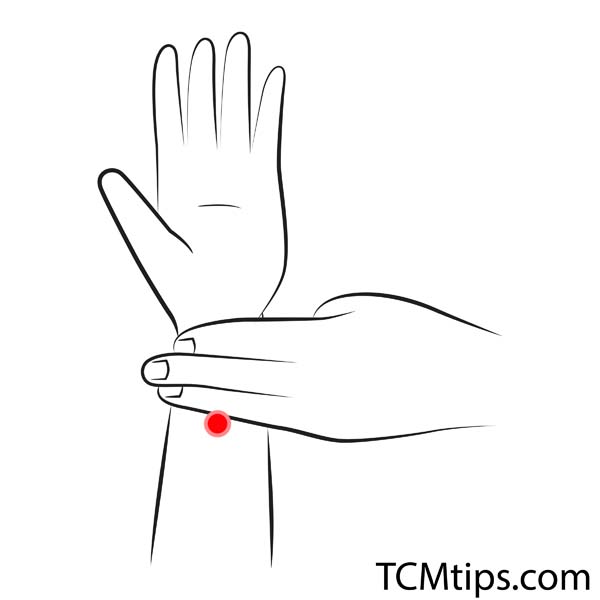
The PC-6 acupoint is one of the most important pressure points on the forearm, located between the palmaris longus and flexor carpi radialis tendons. To find it, measure three fingers from the wrist crease with the palms facing upward.
Stimulation of PC-6 can improve the flexibility of the diaphragm, ease tightness in the chest or palpitations, and reduce the risk of arrhythmia. It’s also an important acupoint for relieving stress or anxiety, a primary cause of heart arrhythmia.
Along with DU-10 (Ling Tai), DU-11 (Shen Dao), and DU-20 (Bai Hui), PC-6 (Nei Guan) was one of the acupuncture points that successfully reduced premature heartbeats in patients suffering from heart arrhythmia.
To stimulate the PC-6 acupressure point on both anterior forearms, apply mild pressure with your thumb for around seven seconds. You may repeat this as many times as you feel is necessary, taking a brief rest each time.
Acupoint: PC-4 (Other Names: Pericardium-4/Xi Men/Xi-Cleft Gate)
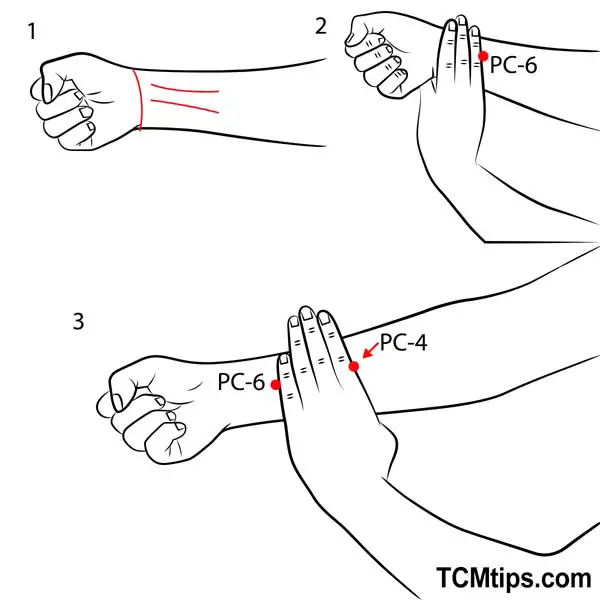
The PC-4 acupoint is located on the palmar aspect of the forearm, five cun above the wrist crease, on the line connecting PC-3 and PC-7. You can also find it by measuring four fingers up the wrist from PC-6.

Stimulation of the PC-4 acupoint, known as the “Xi-Cleft Gate” in English, moves and cools the blood, and calms the heart and the spirit. The Xi-Cleft Gate has many possible clinical applications, including the treatment of acute palpitations, disorders related to blood stasis or internal bleeding, and depression.
Acupuncture at both PC-4 and PC-6 has been shown in clinical studies to help regulate heart arrhythmias.
PC-4 is also one of the acupressure points for emotional release, and stimulation here will help to relieve anxiety and reduce emotional stress.
Apply firm pressure at the acupoint with your thumb while inhaling deeply for five seconds each round. Repeat for three to five minutes every day.
Acupoint: HT-6 (Other Names: Heart-6/Yin Xi/Yin Cleft)

The HT-6 acupoint is located on the radial side of the flexor carpi ulnaris tendon, 0.5 cun above the wrist crease. To find it, measure one finger from the wrist crease with the palm facing upwards.
Known as Yin Xi, or “Yin Cleft,” the HT-6 acupoint helps to regulate the heart and the blood and relieve feelings of acute pain in the chest or heart, such as those caused by an abnormal or irregular heartbeat. Massage here can also release heat from the body, constraining sweat and uncomfortable feelings. HT-6 is also employed in the treatment of anxiety or emotional disturbances, night sweats, and insomnia.
To stimulate the Yin Cleft, apply gentle pressure with your thumb for three seconds, then rest for three seconds. Repeat this process on both wrists for multiple cycles, once each day.

Try our Anti-Aging Gua Sha Tool designed to bring out your skin’s natural glow.
Best Gua Sha Product- Anti-Aging: The tool is designed to target 11 specific aging signs such as wrinkles and sagging skin. By following the 7-step routine, users can improve skin firmness and reduce fine lines naturally.
- Enhances Skincare Routine: It works effectively with serums and lotions, boosting absorption and efficacy of skincare products.
- Visible Skin Improvement: Users can expect a smoother complexion, reduced puffiness, and a more youthful appearance.
 P. Sze
P. Sze 


